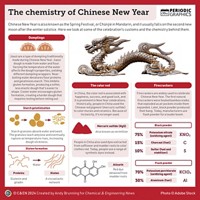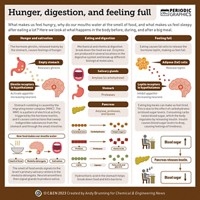Advertisement
Grab your lab coat. Let's get started
Welcome!
Welcome!
Create an account below to get 6 C&EN articles per month, receive newsletters and more - all free.
It seems this is your first time logging in online. Please enter the following information to continue.
As an ACS member you automatically get access to this site. All we need is few more details to create your reading experience.
Not you? Sign in with a different account.
Not you? Sign in with a different account.
ERROR 1
ERROR 1
ERROR 2
ERROR 2
ERROR 2
ERROR 2
ERROR 2
Password and Confirm password must match.
If you have an ACS member number, please enter it here so we can link this account to your membership. (optional)
ERROR 2
ACS values your privacy. By submitting your information, you are gaining access to C&EN and subscribing to our weekly newsletter. We use the information you provide to make your reading experience better, and we will never sell your data to third party members.
Education
Newscripts
Card game, infographics celebrate science
by Jeff Huber
July 25, 2016
| A version of this story appeared in
Volume 94, Issue 30
Labs battle for glory

Wannabe athletes have fantasy sports to scratch their competitive itch on a make-believe playing field. Wannabe scientists will soon have Lab Wars.
Marketed as “the science-themed card game where you build up your lab and sabotage your competitors all for scientific glory,” Lab Wars puts participants smack-dab in the middle of the cutthroat, and sometimes morally ambiguous, world of scientific research. To play, participants control a research team and attempt to boost the team’s fame by collecting and playing cards representing both admirable and nefarious actions. On the admirable side, a player’s lab might publish a book of its studies. On the nefarious side, that same lab might conduct a heist and steal research secrets from a competitor. After several rounds of engaging in these activities, the player with the most renowned lab wins.
Lab Wars was designed for both scientists and nonscientists alike, says Caezar Al-Jassar, a postdoctoral fellow at the Medical Research Council’s Laboratory of Molecular Biology and one of the game’s creators. “For scientists, our main aim was to make them laugh but also give them a sense of real-world academic competition,” Al-Jassar tells Newscripts. “For nonscientists, we wanted to expose them to the exaggerated world of academia” while also teaching them about it in a fun way.
This approach has certainly sparked interest online. To pay for the game’s development, Al-Jassar and cocreator Kuly Heer, a Ph.D. psychologist, solicited financial support on the crowdfunding website Kickstarter. Their initial goal was around $6,500. In the end, they raised roughly $65,000.
Thanks to this support, Al-Jassar and Heer now have enough money to finalize Lab Wars’ artwork, manufacture the game, and ship it to customers. So it won’t be long before supporters of the Kickstarter campaign are playing Lab Wars and living out their scientific espionage fantasies. For those who missed out on the initial fund-raising, Lab Wars can still be preordered at the game’s website for $27.
The chemicals in all-natural foods
While scientists do battle with one another in Lab Wars, James Kennedy has been waging his own war, fighting against the public’s fear of chemicals, or chemophobia.

To help his cause, the secondary school chemistry teacher from Melbourne, Australia, has released a series of 12 infographics depicting fruits and other all-natural foods alongside a list of their chemical components. These lists of “ingredients” are striking in that they are prodigiously long and contain names that might sound intimidating to a lay public unfamiliar with chemistry. For instance, an infographic for kiwi highlights some of the compounds behind the fruit’s flavoring, including 3-hydroxy-β-damascone, 4-vinylguaiacol, and 2,5-dimethyl-4-hydroxy-3(2H)-furanone.
Kennedy has posted his illustrations to his blog alongside ruminations about his crusade against chemophobia. “I want to erode the fear that many people have of ‘chemicals’ and demonstrate that nature evolves compounds, mechanisms, and structures far more complicated and unpredictable than anything we can produce in the lab,” he writes in one blog entry. Those are certainly words the Newscripts gang will be thinking about as we enjoy such summer delicacies as strawberries, blueberries, and peaches, all foods for which Kennedy has designed infographics.
Jeff Huber wrote this week’s column. Please send comments and suggestions to newscripts@acs.org.





Join the conversation
Contact the reporter
Submit a Letter to the Editor for publication
Engage with us on Twitter